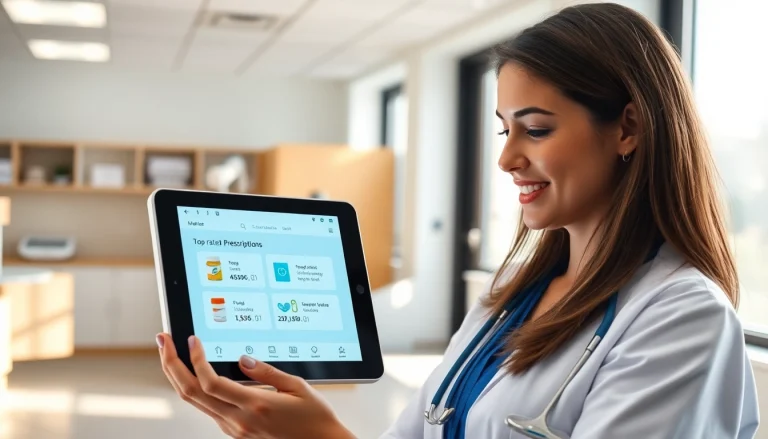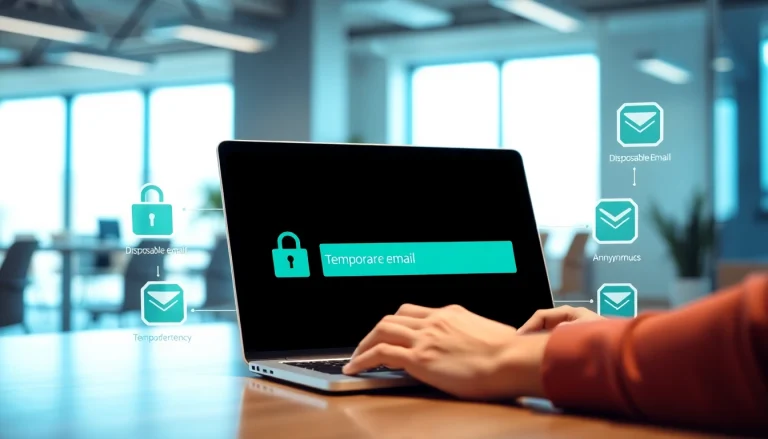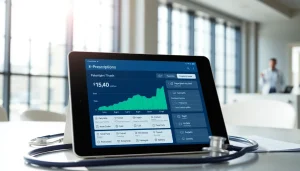The Essential Features of Eprescribing Software
In the rapidly evolving landscape of healthcare technology, electronic prescribing (e-prescribing) software has emerged as a critical tool for streamlining medication management. Designed to enhance efficiency and safety within the healthcare system, e-prescribing solutions facilitate the secure and efficient transmission of prescription information from healthcare providers to pharmacies. Understanding the core features of eprescribing software is essential for healthcare organizations aiming to optimize their prescribing processes and improve patient outcomes.
User-friendly Interface and Dashboards
A key feature of successful e-prescribing software is its user-friendly interface. It must be intuitive enough to ensure that healthcare providers can easily navigate through the application without extensive training. A well-designed dashboard should present relevant information clearly, allowing practitioners to view patient records, medication histories, and prescription options at a glance. Features like customizable layouts and quick access buttons can greatly enhance usability, ultimately leading to reduced prescribing errors and improved patient care.
Integration with Health Records and Pharmacies
Integration capabilities are crucial to the effectiveness of any e-prescribing system. The ability to seamlessly connect with electronic health records (EHR) and pharmacy management systems ensures that physicians have all necessary information at their fingertips. This integration facilitates efficient data sharing and real-time access to a patient’s medical history, allergies, and previous prescriptions. Such comprehensive visibility allows healthcare practitioners to make informed decisions and tailor treatment options accordingly.
Real-time Prescription Tracking and Notifications
Given the urgent nature of medication prescriptions, real-time tracking and notification features are indispensable for optimizing the workflow in a clinical setting. E-prescribing software should provide real-time updates on prescription statuses, alerting both healthcare providers and patients about any issues such as delays, insurance discrepancies, or refill reminders. These timely notifications not only improve communication but also help enhance patient engagement in their own healthcare journey.
Improving Patient Safety with Eprescribing Software
Patient safety is paramount in healthcare. E-prescribing software is designed not only to facilitate prescriptions but also to actively enhance the safety of medication management. Through its advanced features, e-prescribing helps reduce the risk of medication errors, adverse drug interactions, and duplication of prescriptions.
Medication Decision Support Systems
One of the most impactful features of e-prescribing software is the integration of medication decision support systems (MDSS). These systems provide real-time, evidence-based guidance to healthcare providers, helping them to make informed prescribing decisions. MDSS alerts physicians about potential drug interactions, contraindications, and allergies specific to each patient. By delivering timely alerts, these tools stand to significantly decrease the likelihood of adverse drug reactions and enhance overall patient safety.
Drug Interaction Alerts and Allergy Checks
Embedded drug interaction alerts and allergy checks are vital components of e-prescribing software. When a clinician prescribes a new medication, the software immediately analyzes it against the patient’s current medications and known allergies. If there are any potential concerns, the system will generate an alert, allowing the provider to reconsider their choice before finalizing the prescription. This feature helps avert harmful interactions and plays a crucial role in protecting patient health.
Audit Trails for Enhanced Accountability
Audit trails are an essential feature of e-prescribing systems that ensure enhanced accountability within the prescribing process. By maintaining a detailed record of all prescription-related activities, these systems track who prescribed, modified, or canceled a prescription, along with timestamps. This transparency is invaluable not only for compliance with regulatory standards but also for identifying areas for improvement in prescribing habits and workflow efficiency.
Streamlining Workflow through Eprescribing Software
E-prescribing software is primarily designed to streamline healthcare workflows. With an efficient e-prescribing process in place, healthcare professionals can devote more time to patient care rather than administrative tasks. The following features contribute to achieving greater operational efficiency.
Automated Prescription Renewals
Automated prescription renewals represent a significant efficiency gain in e-prescribing software. By employing settings that can automate refill requests based on patient-defined parameters, healthcare providers can significantly reduce the time spent on managing renewals. Patients benefit from uninterrupted access to their medications, which, in turn, can lead to better adherence to treatment plans and improved health outcomes.
Reducing Prescription Errors and Miscommunications
Prescription errors and miscommunications pose serious risks to patient safety. E-prescribing software minimizes these risks by standardizing prescription formats and ensuring clarity in communication. The software eliminates issues related to illegible handwritten prescriptions and reduces confusion regarding dosages, routes, and quantities. With everything documented and submitted electronically, the likelihood of misunderstanding diminishes, leading to better outcomes for patients and greater efficiency for healthcare teams.
Easy Access to Medication Histories
Access to a patient’s medication history is critical for effective treatment decisions. E-prescribing software typically includes features that allow healthcare providers to retrieve comprehensive medication histories, including previous prescriptions, dosages, and treatment responses. This data-driven approach informs clinical decisions and minimizes the chances of duplicating medications or prescribing contraindicated treatments. Knowing what a patient has taken previously can significantly enhance the quality of care.
Evaluating the Best Eprescribing Software Options
Selecting the ideal e-prescribing software for an organization requires careful evaluation of various factors. Different organizations will have unique needs, making it essential to align software capabilities with specific requirements.
Key Metrics to Consider in Software Selection
There are several critical metrics to consider when evaluating e-prescribing software. These include integration capabilities with existing EHR systems, user-friendliness, reliability, and compliance with healthcare regulations. Additionally, it is crucial to assess the ability of the software to provide clinical decision support and its responsiveness to stakeholder feedback. This comprehensive evaluation ensures that organizations select software that enhances their operational processes.
User Reviews and Industry Ratings
User reviews and ratings can provide invaluable insights into the effectiveness and reliability of e-prescribing software options. Consulting users with similar organizational needs can shed light on software performance in real-world settings. Analyzing these reviews can also reveal common challenges and benefits, assisting buyers in making informed decisions.
Trial Periods and Demonstrations
Before committing to a particular e-prescribing software, organizations should take advantage of trial periods or demonstrations. These opportunities allow teams to test the software’s features and functionalities in their specific clinical environments. During the trial, healthcare practitioners can assess usability, speed, and how well the software integrates into existing workflows. This hands-on experience is critical for determining whether the software is a good fit for the organization.
The Future of Eprescribing Software in Healthcare
The evolution of e-prescribing software is ongoing, driven by advancements in technology and changing healthcare needs. As healthcare continues to shift towards a more joined-up and patient-centered approach, future developments in e-prescribing software are expected to focus on enhancing efficiency and further improving patient care.
Emerging Technologies and Innovations
Innovation is at the forefront of e-prescribing technology. Future solutions may leverage artificial intelligence (AI) and machine learning to enhance real-time clinical decision support systems further. Integrating AI could provide personalized medication recommendations based on patient-specific data and broader population health insights, optimizing medication efficacy while minimizing risk. Innovations in blockchain could also enhance data security and integrity in prescription management.
Impact on Patient Care and Provider Efficiency
As e-prescribing software continues to develop, its impact on patient care and provider efficiency will likely become increasingly pronounced. Enhanced analytical tools can provide actionable insights into treatment effectiveness and patient adherence, enabling healthcare providers to adjust care plans more effectively. Additionally, increased efficiency through automation can help healthcare teams better allocate their time to direct patient care, resulting in improved patient satisfaction and outcomes.
Regulatory Changes and Compliance Considerations
As the regulatory landscape for healthcare technology evolves, e-prescribing software must adapt to adhere to new guidelines and standards. Compliance with rules related to data privacy, cybersecurity, and interoperability will remain a high priority among software developers. Organizations will need to stay informed about these changes to ensure their e-prescribing systems remain compliant and provide the highest level of security to patient data.








